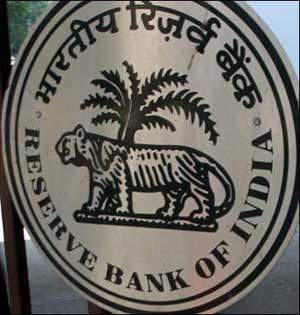|
| Help | |
| You are here: Rediff Home » India » Business » Report |
| Advertisement | |||||||||||||||||||||||
| |||||||||||||||||||||||
| |||||||||||||||||||||||
| Advertisement | |||||||||||||||||||||||
Banks' base rate effective from July 1: RBI
 Acceding to the demand of banks, the Reserve Bank of India on Friday deferred the date of implementation of the proposed base rate model to July 1 and also exempted three category of loans from the new system.
Acceding to the demand of banks, the Reserve Bank of India on Friday deferred the date of implementation of the proposed base rate model to July 1 and also exempted three category of loans from the new system.
"Yes. We have allowed that it (the base rate) will start from July 1. All concerns of banks (regarding the implementation of the base rate model) have been addressed," RBI Deputy Governor, Usha Thorat, told reporters in Mumbai after a meeting with chiefs of major banks.
RBI, in its draft circular, had asked banks to adopt the base rate model from April 1. The central bank decided to replace the current benchmark prime lending rate system with the base rate to increase transparency in lendings.
However, Thorat indicated that banks were unlikely to be given any exemption on short-term loans (allowing them to lend below their base rate to corporate clients) in the base rate model.
"Basically, the principles we have articulated (on lending) will remain the same," Thorat said in response to query.
Talking to reporters after the meeting with the RBI top brass, Indian Banks' Association chairman and Union Bank CMD, M V Nair, said that the apex bank has agreed to exempt three category of loans from the base rate's ambit.
These are staff loans, loans against fixed deposits and loans under the Differential Rate of Interest scheme.
Besides, the central bank may also consider exemption of export credit from the base rate, Nair said.
"Staff loans, loans against Fixed Deposits and differential rate of interest loans have been exempted (from the base rate). It (RBI) is yet to decide on export loans," Nair said.
Bank chiefs who met the RBI top brass on Friday included SBI [Get Quote] chairman O P Bhatt, Union Bank CMD M V Nair, Bank of Baroda [Get Quote] CMD M D Mallya, Canara Bank [Get Quote] CMD A C Mahajan and StanChart India head Neeraj Swaroop, amongst others.
The banking regulator was represented by its deputy governors -- Usha Thorat, Shyamala Gopinath, K C Chakrabarty and Subir Gokarn.
The apex bank decided to restructure the existing BPLR model as it felt that there was no transparency in the way banks treated top corporate clients and common borrowers.
Banks normally lend at much lower rates, as low as 5-6 per cent, to woo corporate borrowers while common borrowers pay a much higher rate.
The actual lending rates charged to borrowers would be the base rate plus borrower-specific charges, which will include product-specific operating costs, credit risk premium and tenor premium.
Recently, banks had demanded the extension of deadline owing to the huge task of segment-wise data collection to calculate the base rate besides aligning their existing clientele in accordance with the new system.
The base rate of each bank will be calculated based on its cost of deposits. Naturally, those banks, which have a higher cost of deposits will have a higher base rate.
According to current indications, the base rates of most banks are likely to be in the range of 8.5-9.5 per cent.
Banks fear that given the new lending model, corporates will opt for other (non-bank) avenues to seek cheaper funding, which will primarily hit the business of small banks as a large chunk of their loans are to corporate clients.
| © Copyright 2009 PTI. All rights reserved. Republication or redistribution of PTI content, including by framing or similar means, is expressly prohibited without the prior written consent. |
| © 2009 Rediff.com India Limited. All Rights Reserved. Disclaimer | Feedback |
